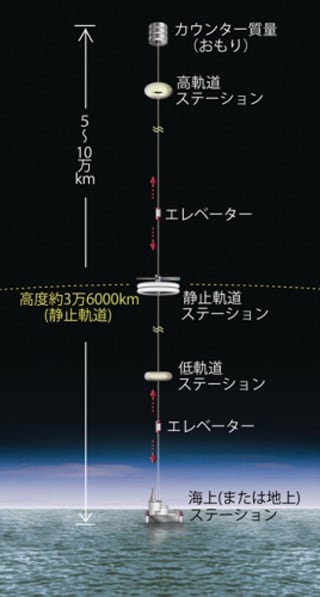
- Semiconductor Technology Now
Technology
Space Elevators to Facilitate Journeys into Space by 2050
- May 31, 2013

A space elevator is a transportation system that goes up and down between the Earth’s surface and space. It sounds futuristic, but the concept itself is not new. It was long considered to be just a theory, however, because there was no material that was strong enough for building such a structure. The game changer was the discovery in 1991 of an extremely strong material called carbon nanotube. And in February 2012, Japanese construction company Obayashi Corporation attracted public attention by announcing its plan to build a space elevator by 2050. If we are to enter a true space age, we would need a means of transportation capable of carrying goods and people into space much more efficiently and safely than conventional spacecraft. Space elevators certainly fit the bill, but how close are they to becoming a reality? Let’s find out.
Construction starts not from the Earth but on a geostationary station, by extending a tether from it both upward and downward
A space elevator is a transporter that shuttles between the Earth’s surface and outer space. The word “elevator” evokes the image of an elevator in a building, but the currently contemplated structure of a space elevator is nothing like that. Among the satellites orbiting the Earth are those known as geostationary satellites. They are on an orbit about 36,000 km above the Earth and circle the planet in exactly 24 hours, which makes them appear stationary to ground observers. Because these satellites can observe the Earth’s surface from a fixed position in the sky, many of them are used as weather and broadcasting satellites. If a space station is built on a geostationary orbit, and a tether is stretched both above and below the space station (so the center of gravity remains on the geostationary orbit) until the lower tip of the tether reaches the Earth, then you get a space elevator by adding a climber unit that goes up and down the tether.
 |
The concept of a space elevator was proposed as early as in 1960, but since then it had long remained in the realm of science fiction. The reason was that no existing tether material was strong enough to stretch tens of thousands of kilometers. Hung tethers made of conventional materials cannot keep bearing their own weight and snap when they reach certain lengths. Steel wire, for instance, is only good for up to 15 km or so. Then a breakthrough occurred in 1991, when Sumio Iijima discovered an extremely strong new material that came to be known as carbon nanotube. It is a tube-shaped material made of a one-atom-thick sheet of carbon called graphene. Theoretically, carbon nanotubes have the strength required of a space tether, which meant that the feasibility of space elevators increased dramatically.
 |



















